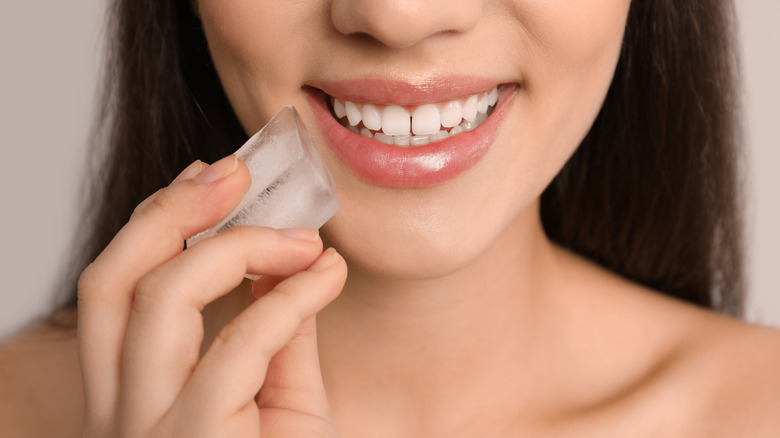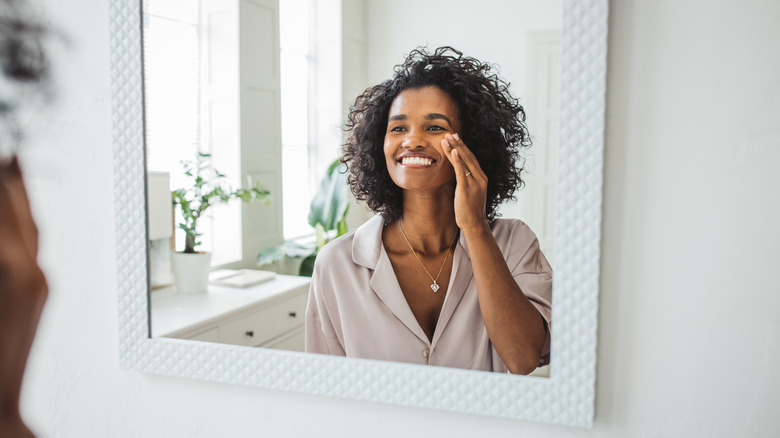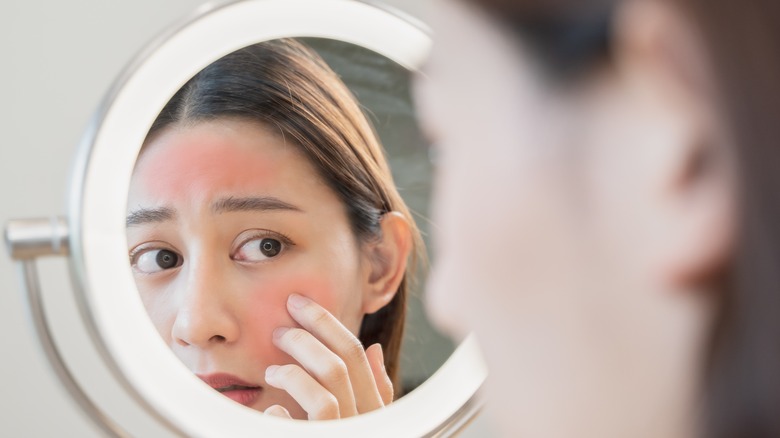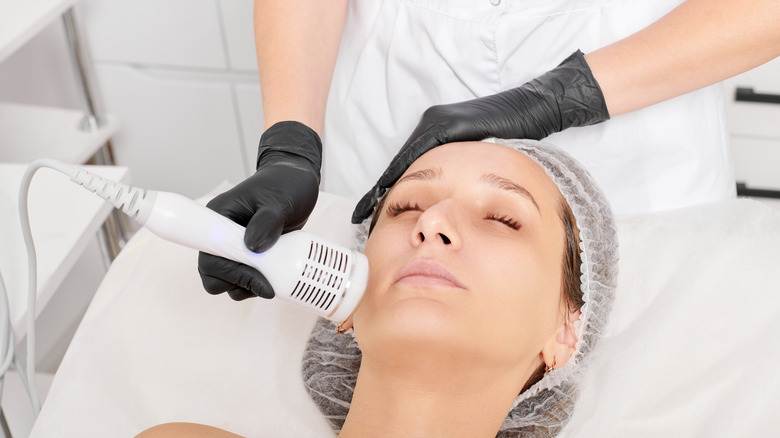Face Icing 101: What It Can Do For You & How To Reap The Benefits
While face icing might feel like a relatively new trend, the technique has actually been around for centuries. In today's beauty world there seems to be no shortage of face treatments and techniques designed to help your skin, but knowing if one really works can be difficult. This is what makes face icing's long history so significant. In a world of ever-changing fads, this technique has stuck around, and with good reason.
Face icing has grown to encompass a LOT of different products, technologies, and techniques ranging from ultra-modern advances in cryotherapy treatments to cute and trendy face rollers to good old-fashioned cold spoons. The great thing about this variety is that, depending on the level of technique or service you're interested in pursuing, you can find a method that works best for your skin and/or skincare goals. As an added bonus, you can also combine your facial icing routine with other skincare techniques like gua sha for double the beauty benefits in the same amount of time.
While all forms of face icing are technically a form of cryotherapy, many at-home techniques can feel more accessible than full-on professional services. This can be especially helpful if you're new to face icing. That being said, whether you've never tried face icing before or you are looking to upgrade your technique, here's the low-down on what face icing can do for you.
Face icing benefits
Face icing can have a variety of benefits for your skin including soothing any redness and even serving as blemish control. The basic science of the process is that as your skin is exposed to ultra-cold temperatures (whether that be an ice cube, roller, mask, or even liquid nitrogen) blood rises to the surface. This extra blood flow can both soothe any surface issues and tighten your skin overall. Candace Marino, a celebrity facialist known as "The LA Facialist", told Byrdie, "Think about when you have an injury or swelling in the body and your doctor instructs you to ice it —it's the same concept, but now we're using it for aesthetic purposes."
Ice exposure reduces inflammation which can be especially helpful if you're dealing with pimples/blemishes, acne, or even rosacea. Ice can also make your pores appear smaller and, in some cases, can even help to unclog pores that might have dirt and debris clogging them. Using ice in this way essentially tones your face and this, combined with smaller pores and less inflammation, can lead to a smoother skin surface.
Potential drawbacks
If you decide to go for a professional service like liquid nitrogen cryotherapy there are some important things to know. Hadley King, MD, a New York-based board-certified dermatologist elaborated to Byrdie, "It's important to have [cryotherapy] done by a well-trained professional to avoid possible risks like burns, frostbite, and nerve damage. It's also safer for paler skin, as it can create discoloration in those with darker skin or a tan."
Speaking of tans, while it's always important to avoid sunburns (and to wait to resume your skincare routine after a burn), it can be especially important to avoid any burns or irritation on your face before using any face icing techniques. Icing a burn can actually lead to frostbite and skin damage so it's best to avoid any unnecessary sun exposure if you're planning on pursuing skin icing techniques.
It's also important to remember that face icing does not work for everyone. Different skin types, especially those with reactive and/or sensitive skin might not end up with positive results. Face icing can lead to drier skin which can make your skin's texture feel bumpy or rough. Making sure your skin stays hydrated can definitely help you combat any ice-related dryness but some skin types simply don't respond well to icing. Making sure to keep a close on your skin after icing is key to recognizing whether you should continue.
How to get the most from face icing
The best thing about face icing is that it's super easy to do yourself. While there can be benefits to cryo-facials and esthetician services, the simplicity of simpler face icing techniques makes them more accessible to those who might be on a budget. To ensure you get the best results, always make sure to gently wash your skin AND your roller/gua shua/spoon/etc. before beginning. Applying an oil or moisturizer beforehand can also be important in helping to protect your natural skin barrier (plus it can make the rolling process smoother).
Aftercare can also be incredibly important to your face icing routine. Since your skin has already been activated from the face icing process, it's important to avoid any additional irritating substances like toners or washes (avoid retinoids in particular). It's also best to avoid any exfoliation (either chemical or physical) and opt for gentle cleansers that are suitable for sensitive skin. By using something gentle, you can ensure you don't irritate or inflame your skin. Definitely use serums and moisturizers after your face icing, and never forget your sunscreen.



